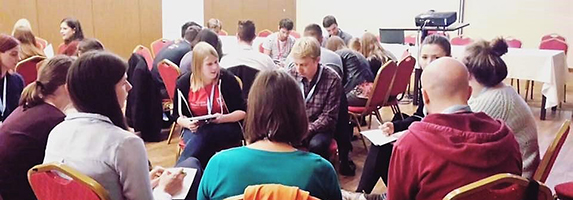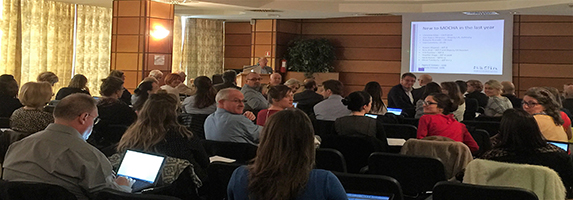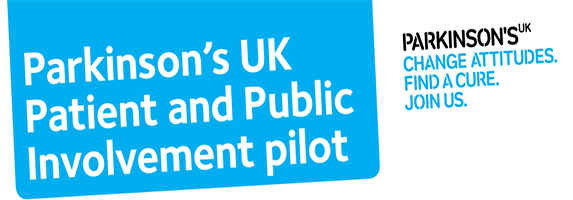Transition to adult care involves a wide range of stakeholders from hospital and health managers, health professionals, pharmacists, young patients and their families. The European Pharmaceutical Students Associations explains the crucial role of pharmacists in that regard.
There is a very low awareness and understanding of the Transition issues amongst many healthcare professionals in Europe. When confronted with the topic at the 13th Autumn Assembly of EPSA (European Pharmaceutical Students Association) the majority of the pharmaceutical students were confused and surprised to learn about the patients struggles. The topic was presented by a representative of the EPF Youth group, during the workshop entitled ‘Transition to Adult Care and its Psychological Impacts on Young Patients’.
The workshop was part of the Educational program of the event and achieved 3 important results:
- During this interactive session the audience recognized that transition may represent a problem for young patients.
- The audience regarded the role of pharmacists in the transition process and suggested that the figure of the pharmacist can work along with doctors when talking to patients on topics like treatment and drugs.
- The pharmaceutical students shared their own perspectives, the realities in their respective countries, exchanged ideas and provided positive feedbacks. The outcome was an agreement that pharmacist need to be trained to be able to effectively talk to patients especially young ones.
The attendees were also presented some best practices that have been already implemented in different European countries. Such practices aim to tackle the lack of coordination among stakeholders who are in charge of ensuring that the process takes place as smoothly as possible. Thus a team made up of different professional figures, e.g. pediatric and adult primary care doctors, nurses and educators is deemed crucial when supporting young patients who move to the adult-centered health care.
Another point in common to projects/programs presented is that they are designed to equip young patients with skills and knowledge. The aim is to support the patients in taking control over their condition and to better self-manage. The figure of psychologist is also recognized essential to avoid any detrimental psychologic implications in bewildered young patients which often lead to low rates of adherence to specific treatments or drop-outs. But most importantly, the best practices suggest that transition is successful when young patients can share fears and doubts to other peers and are able to have access to the right information that allow them to live this delicate process efficiently and comfortably.
The workshop follows up on the roundtable the Youth Group hosted in Brussels last March which saw the involvement of different stakeholders ranging from healthcare professionals and patient organizations to MEPs and representatives of the academic world. Transition was defined as the process that young patients with chronic conditions go through when moving from child-centered to adult-centered health care systems and was identified as a major problem in the context of access to healthcare. Thus, it was recognized prominent importance on this year’s EPF agenda. Specifically, the rationale behind this workshop was the need to identify and limit the psychological issues that may arise during the process. When poorly managed, the transition can also result in lack of trust in health professionals and in the healthcare system.



